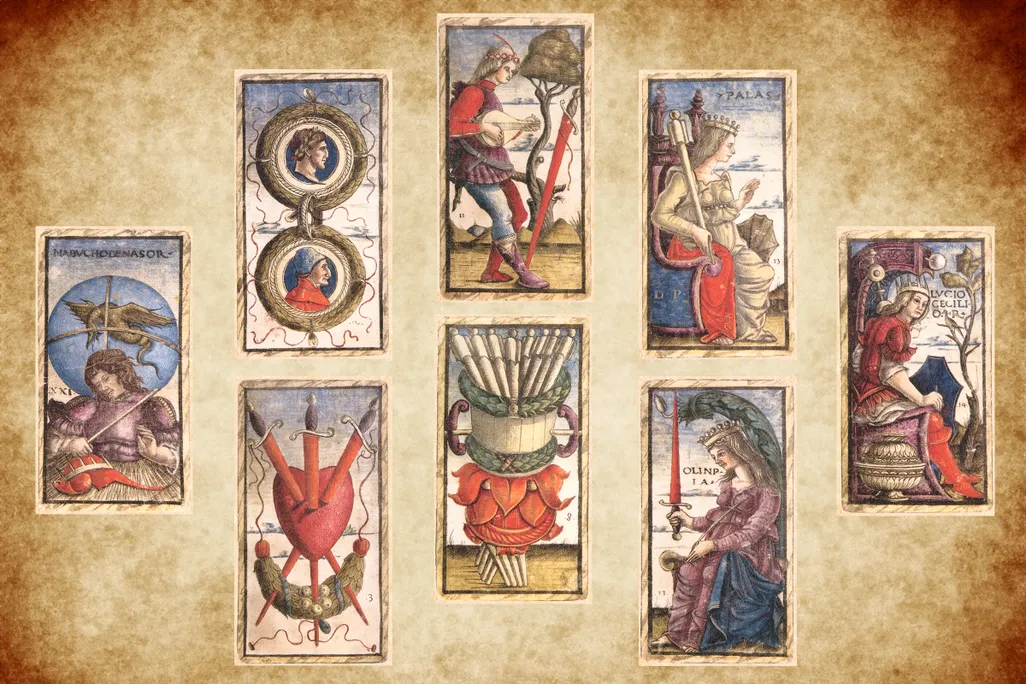Alright, so I decided to really get into tarot card symbolism and folklore recently. It wasn’t like I woke up one day and was suddenly an expert, far from it. It actually started pretty casually. I got my hands on a deck, one of those classic Rider-Waite ones, mostly because the artwork looked kinda intriguing, you know? Not because I was planning to predict the future or anything.

So, there I was, with these 78 cards. I spread them out, looked at them, and honestly, my first thought was, “What in the world am I even looking at?” Just a bunch of pictures – some dude hanging upside down, a lady with a lion, skeletons on horses. It felt overwhelming. I almost just put them back in the box and called it a day.
But then, I figured, well, I’ve got them now, might as well try to understand what all these images are supposed to mean. I didn’t grab any fancy books right away. I just started looking. Really looking. I’d pick a card, say The Fool, and just stare at it. Noticed the little dog, the cliff, the sun. Then I’d pick another, like The Magician, and see all the symbols on his table – the cup, the pentacle, the sword, the wand.
Digging into the Pictures
That’s when I started to get curious about the symbolism. Why a dog with The Fool? Why those specific items for The Magician? I started to think these weren’t just random decorations. They had to have some sort of story or meaning packed into them.
So, I began to do a bit of light research. Not heavy academic stuff, just trying to find out what common interpretations were for these little details. I’d look up, say, “symbolism of mountains in tarot” or “meaning of water in tarot cards.” Slowly, things started to connect. It was like learning a new visual language.
- I noticed patterns: certain colors appearing on cards with similar vibes.
- I saw recurring objects: cups often linked to emotions, swords to thoughts or conflict.
- Animals started to make more sense: the lion for strength, the snake for wisdom or temptation.
Connecting to Old Stories – The Folklore Bit
This is where the folklore part really kicked in for me. I realized a lot of these symbols weren’t just “tarot symbols.” They were ancient. They popped up in myths, legends, old wives’ tales, and art from centuries ago. The Death card, for example, with the skeleton on a horse – that’s straight out of medieval imagery about the “Danse Macabre” or the Four Horsemen of the Apocalypse. It wasn’t just a scary tarot card; it was tapping into a really old, shared cultural idea about change and endings.

I started to see the cards less as fortune-telling tools and more like a collection of archetypal stories and human experiences. Each card felt like a snapshot of a bigger narrative, one that humans have been telling themselves for a long, long time. The Lovers card wasn’t just about romance; it often depicted choices, drawing on old stories about heroes having to make a critical decision, often involving relationships but also personal values.
It’s funny, because when I first got the deck, I was pretty skeptical about the whole thing. I remember thinking it was just a bit of fun, maybe something to talk about. But then I started this process of just looking and connecting the dots. It became less about “what will happen to me?” and more about “what story is this picture telling, and where have I seen these ideas before?”
This whole thing reminds me of when I tried to learn how to cook properly, not just reheating stuff. I got this old cookbook from my grandma. No fancy pictures, just text. And the instructions were super vague, like “add a pinch of this” or “cook until it feels right.” I ruined so many dishes! I was like, “What does ‘feels right’ even mean?!” It was frustrating. But I kept at it, started paying attention to smells, textures, how ingredients changed with heat. Slowly, I began to understand the ‘folklore’ of her kitchen, the unwritten rules. Learning the tarot symbols felt a bit like that. Frustrating at first, a bit like decoding a secret language, but then slowly, the patterns and the underlying stories started to emerge. It was about recognizing the ‘flavor’ of each card based on its ingredients, its symbols.
So yeah, that’s been my journey. Just spending time with the cards, looking closely, and then sort of tracing back where those images and ideas might have come from. It’s been a pretty cool way to engage with art and storytelling, actually. Still got a long way to go, always more to see in those pictures.